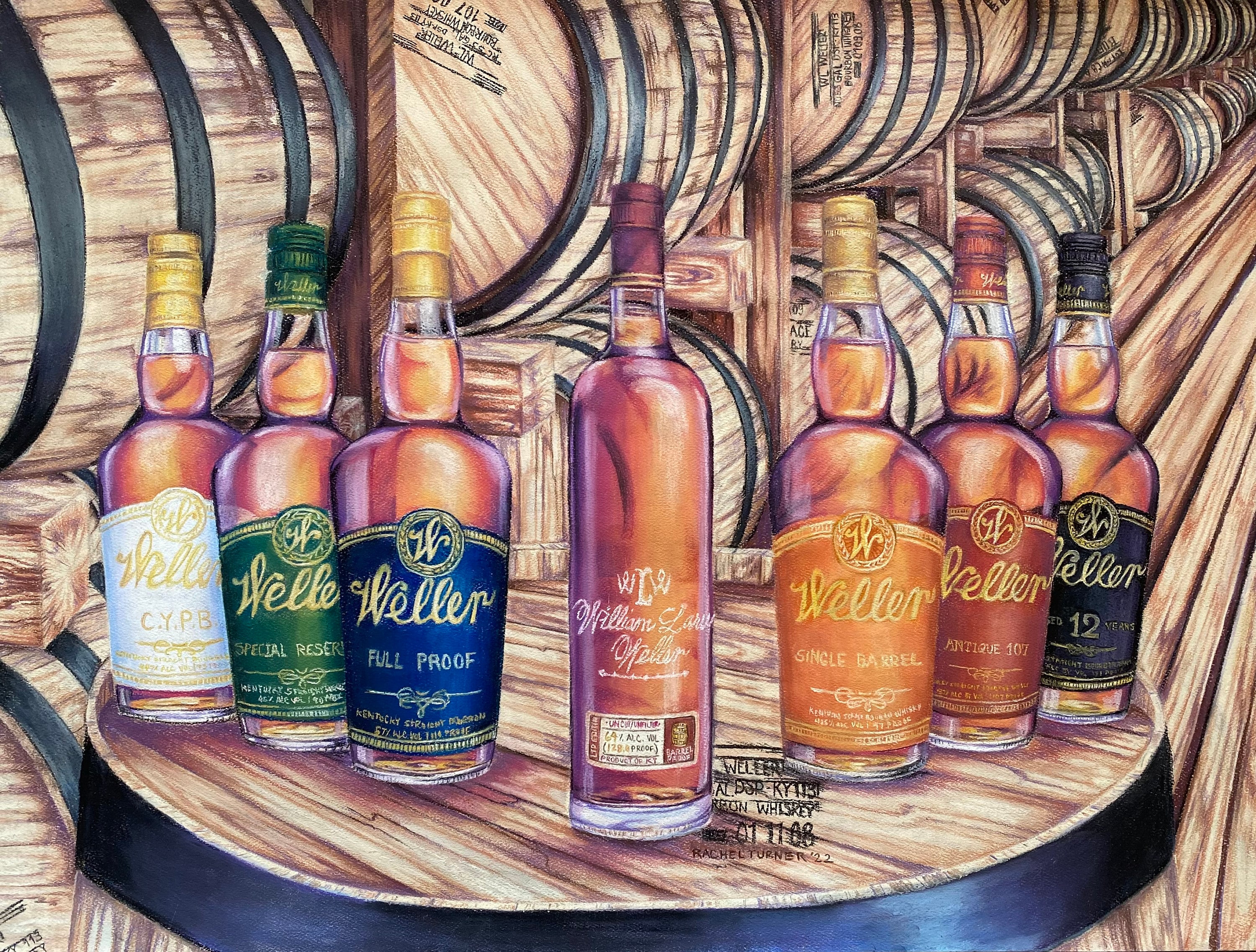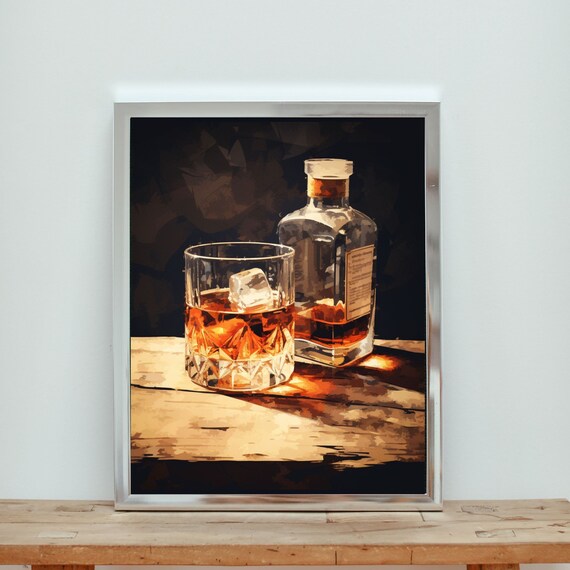Realism Art in the Whiskey Market: Depicting Moments of Purification
Realism Art in the Whiskey Market: Depicting Moments of Purification
Blog Article
The Value of Whiskey Art in Celebrating Heritage and Workmanship in the Beverage Sector
The complex connection between whiskey art and the celebration of heritage and craftsmanship within the drink sector can not be overemphasized. With thoughtfully developed labels and containers, scotch brands envelop their historic roots and the artisanal skills that define their manufacturing techniques. This creative dimension not just boosts market charm but also acts as an avenue for cultural storytelling, cultivating a much deeper connection in between the craft and the consumer. As we explore the numerous aspects of this topic, intriguing inquiries regarding the impact of modern-day patterns on traditional techniques arise, motivating additional evaluation.
The Historic Roots of Whiskey
At the heart of whiskey's appeal lies an abundant tapestry of historic origins that map back to old people. The origins of whiskey can be connected to the distillation practices of the Sumerians and Babylonians around 2000 BCE, where early kinds of fermented grain beverages began to emerge. Nonetheless, it was in the Center Ages that the art of distillation progressed considerably, especially in Ireland and Scotland, leading to the development of bourbon as we know it today.
The term "whiskey" itself derives from the Gaelic word "uisce beatha," indicating "water of life." This expression underscores the cultural relevance of bourbon in Celtic cultures, where it was frequently related to routines, parties, and communal bonding. By the 15th century, distillation ended up being an acknowledged craft within reclusive areas, leading the way for the establishment of legal distilleries.
As trade paths broadened, scotch's appeal expanded, going beyond local borders and recording the interest of connoisseurs worldwide. Whiskey Art. This historical journey reflects not just the workmanship behind scotch manufacturing however likewise its important duty in social and social contexts, noting it as a considerable drink throughout history
Artistic Expression in Branding
Scotch branding stands as a compelling intersection of artistry and commerce, where aesthetic identification plays a crucial duty fit customer understanding. The appearances of bourbon tags, packaging, and advertising materials mirror not just the brand name's story but additionally its core worths and heritage. With creative expression, distilleries convey a story that reverberates with consumers, evoking feelings and stimulating connections.
Making use of color, typography, and images in branding serves to set apart items in a saturated market. As an example, typical themes might evoke a feeling of authenticity and workmanship, while contemporary designs can symbolize development and forward-thinking. This strategic creative instructions improves brand name recognition and loyalty, permitting consumers to create a personal connection with the bourbon they choose.
Additionally, imaginative expression in branding typically works as a celebration of local heritage. Distilleries regularly incorporate regional icons or historic referrals right into their designs, developing a local color that welcomes customers to take part in a more comprehensive cultural experience. Inevitably, the artistry behind scotch branding not just enhances visual allure however also enhances the total story of the brand, cultivating a much deeper appreciation for the craftsmanship and heritage ingrained in each container.
Workmanship in Container Layout
The artistry apparent in scotch branding prolongs past aesthetic identification to incorporate the workmanship involved in bottle design. Each bottle acts as a vessel not just for the spirit within, however likewise for the story it outlines its practice, top quality, and beginning. The design process calls for thorough focus to information, as components such as product, closure, and shape contribute considerably to the overall perception of the whiskey.
Workmanship in container style involves selecting high-quality glass that can boost the bourbon's color and clarity, while also giving a responsive experience for the consumer. The shape of the container need to be both visually appealing and functional, often mirroring the heritage of the brand. Many distilleries decide for special shapes or printed logos that evoke a feeling of authenticity and background.
Additionally, the label layout and typography play a vital duty in connecting the brand name's narrative. Whiskey Art. A well-crafted container not only captivates the consumer's eye however additionally strengthens the brand name's dedication to high quality and tradition. In this way, the craftsmanship of bottle style ends up being an essential aspect of the scotch experience, merging creativity with an extensive respect for heritage
Social Importance of Scotch Art
Commemorating tradition and workmanship, the cultural relevance of bourbon art goes beyond simple visual appeals, linking with the social and historical stories of the regions where it originates. Each bottle functions as a canvas, portraying the special stories, folklore, and customs that have helpful hints formed regional whiskey-making practices. The intricate styles commonly reflect the heritage of the distillers, integrating icons and motifs that reverberate with the society and values of their areas.

In enhancement, whiskey art plays an important duty in communal gatherings and parties, functioning as a substantial link in between individuals and their shared experiences. By valuing the creativity in whiskey product packaging, consumers grow a deeper understanding and respect for the craft, ultimately enriching their satisfaction of the beverage itself.
Modern Trends in Scotch Presentation
In recent years, the presentation of bourbon has actually advanced to show modern tastes and patterns while still recognizing standard workmanship - Limited Edition. Distilleries are progressively concentrating on visual aspects that enhance the overall alcohol consumption experience, connecting the space in between heritage and modernity
Innovative container designs have actually emerged, frequently including lasting products and creative labels that tell compelling tales. this article Lots of brands currently team up with local artists, infusing their items with one-of-a-kind visual expressions that reverberate with customers. In addition, limited-edition releases are frequently packaged in collectible containers, including value and charm for aficionados.

Final Thought
To conclude, bourbon art functions as a vital channel for sharing the heritage and workmanship intrinsic in the drink industry. With intricate branding, ingenious bottle layouts, and culturally considerable imaginative components, bourbon brand names efficiently honor their customs and get in touch with customers. This artistic narrative not just elevates the recognition of whiskey however additionally strengthens community identification and pride among manufacturers. Ultimately, scotch art plays an important role in preserving and celebrating the rich social tapestry of whiskey-making.


Craftsmanship in bottle layout includes choosing high-grade glass that can boost the whiskey's shade and clarity, while also supplying a responsive experience for the customer. In this way, the workmanship of container design becomes a vital aspect of the scotch experience, combining artistry with an extensive respect for heritage.
In final thought, scotch art serves as an essential conduit for revealing the heritage and workmanship inherent in the beverage industry.
Report this page